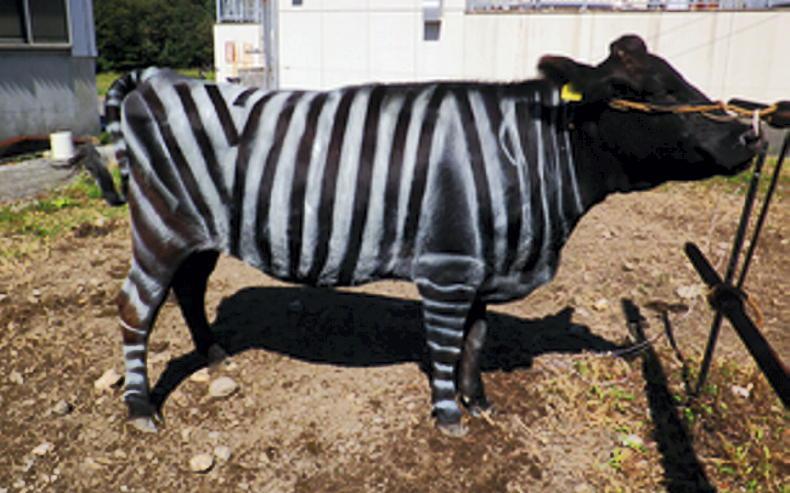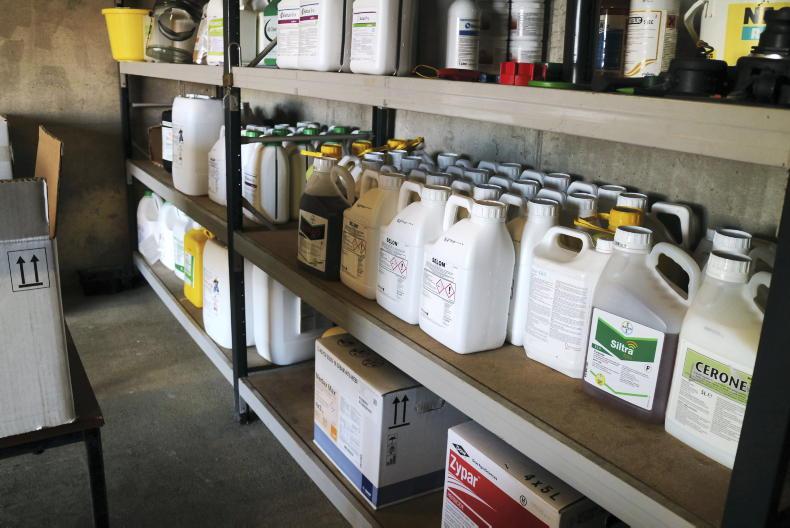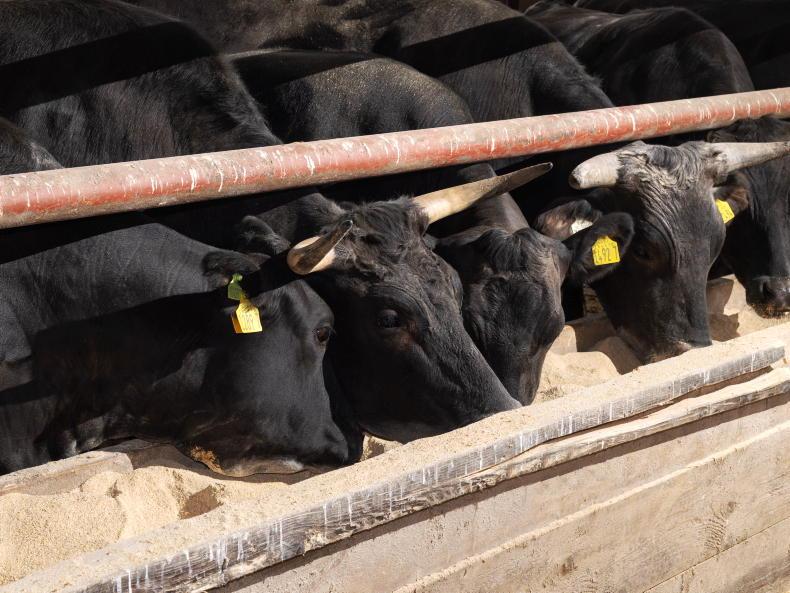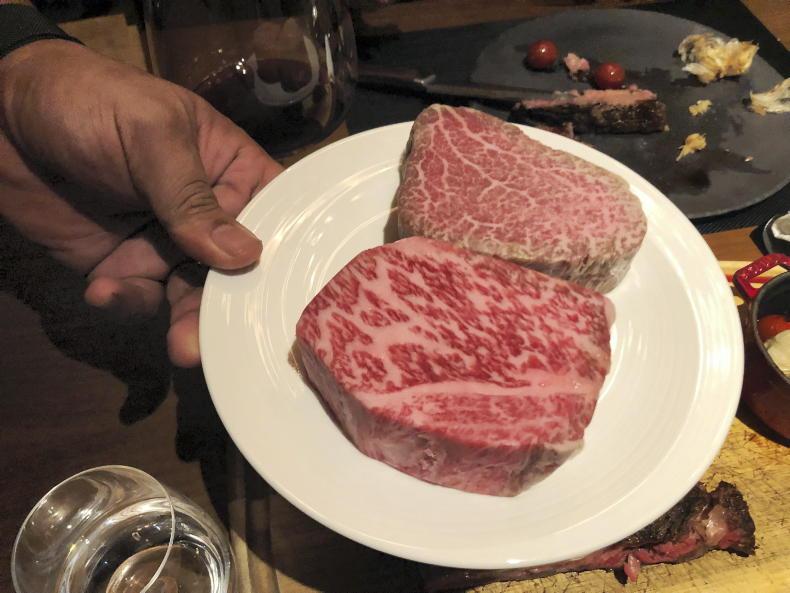Painting zebra-like stripes on cows can decrease the incidence of biting flies landing on individual animals by 50%, peer-reviewed Japanese researchers have found.
The finding came following a study, overseen by the University of Illinois in the US, which set out to prove the impact contrasting stripes have on fly landings on cattle.
Biting flies are attracted to their host animals by odour, shape, movement, brightness, colour, polarisation and body temperature.
Stripes are thought to confuse insect motion detection systems that control their approach and landing on the cattle.
Study
To determine if this was the case, the researchers used a uniform group of black cattle in Japan. Three animals were used across nine days.
In three-day blocks, one cow was painted with white stripes, another with black stripes and the final cow was left with no stripes. On rotation, each cow was then tested with an alternative marking so that each had three days of each marking.
The cattle were observed simultaneously over two half-hour periods daily, once in the morning and once in the evening. During this observation, they were tied to individual posts and left in a line, alongside each other and rotated for each observation.
The white and black paint for the stripes was applied daily, a half hour before the morning observation so as to mitigate any impact its smell would have on the flies.
Regardless of any potential smell impact, the flies landed on the cattle with black stripes more than than they did on the white-striped animals.
Results
Observation of each cow involved taking photographs every minute throughout the half hour and counting the number of fly-repelling actions each cow made.
These fly-repelling actions included head throwing, ear twitching, leg stamping, skin twitching and tail flicking.
The total number of biting flies on the legs and body of the black cows painted with white stripes was almost half those observed on cows painted with black stripes and cows with no stripes.
In contrast, there was no significant difference observed in the number of biting on the black-striped cows and no-stripe cows.
Some 39.8 fly-repelling behaviours per 30-minute observations were observed in the white-striped cows, while 53 and 54.4 behaviours were seen in the black-striped and no-stripe cows respectively.
The lower number of fly-repelling behaviours in the white-striped cows was assumed to be because of the fewer numbers of biting flies on their legs and body.
Potential
The researchers said biting flies are the most damaging arthropod pests of cattle worldwide and the economic impact of them in US cattle production has been estimated at $2.211m per year.
Because of the economic loss associated with this pest, cattle owners have primarily used insecticidal control measures. However, it has been found that insects often evolve resistance to a new pesticide within about a decade of its introduction.
The scientists involved say the stripe study provides an alternative to the use of conventional pesticides for mitigating biting fly attacks on livestock and that it helps resolve this pesticide resistance problem.
Read more
Is a follow-up lice treatment required mid-winter?
Control flies before they impact productivity
Painting zebra-like stripes on cows can decrease the incidence of biting flies landing on individual animals by 50%, peer-reviewed Japanese researchers have found.
The finding came following a study, overseen by the University of Illinois in the US, which set out to prove the impact contrasting stripes have on fly landings on cattle.
Biting flies are attracted to their host animals by odour, shape, movement, brightness, colour, polarisation and body temperature.
Stripes are thought to confuse insect motion detection systems that control their approach and landing on the cattle.
Study
To determine if this was the case, the researchers used a uniform group of black cattle in Japan. Three animals were used across nine days.
In three-day blocks, one cow was painted with white stripes, another with black stripes and the final cow was left with no stripes. On rotation, each cow was then tested with an alternative marking so that each had three days of each marking.
The cattle were observed simultaneously over two half-hour periods daily, once in the morning and once in the evening. During this observation, they were tied to individual posts and left in a line, alongside each other and rotated for each observation.
The white and black paint for the stripes was applied daily, a half hour before the morning observation so as to mitigate any impact its smell would have on the flies.
Regardless of any potential smell impact, the flies landed on the cattle with black stripes more than than they did on the white-striped animals.
Results
Observation of each cow involved taking photographs every minute throughout the half hour and counting the number of fly-repelling actions each cow made.
These fly-repelling actions included head throwing, ear twitching, leg stamping, skin twitching and tail flicking.
The total number of biting flies on the legs and body of the black cows painted with white stripes was almost half those observed on cows painted with black stripes and cows with no stripes.
In contrast, there was no significant difference observed in the number of biting on the black-striped cows and no-stripe cows.
Some 39.8 fly-repelling behaviours per 30-minute observations were observed in the white-striped cows, while 53 and 54.4 behaviours were seen in the black-striped and no-stripe cows respectively.
The lower number of fly-repelling behaviours in the white-striped cows was assumed to be because of the fewer numbers of biting flies on their legs and body.
Potential
The researchers said biting flies are the most damaging arthropod pests of cattle worldwide and the economic impact of them in US cattle production has been estimated at $2.211m per year.
Because of the economic loss associated with this pest, cattle owners have primarily used insecticidal control measures. However, it has been found that insects often evolve resistance to a new pesticide within about a decade of its introduction.
The scientists involved say the stripe study provides an alternative to the use of conventional pesticides for mitigating biting fly attacks on livestock and that it helps resolve this pesticide resistance problem.
Read more
Is a follow-up lice treatment required mid-winter?
Control flies before they impact productivity










SHARING OPTIONS